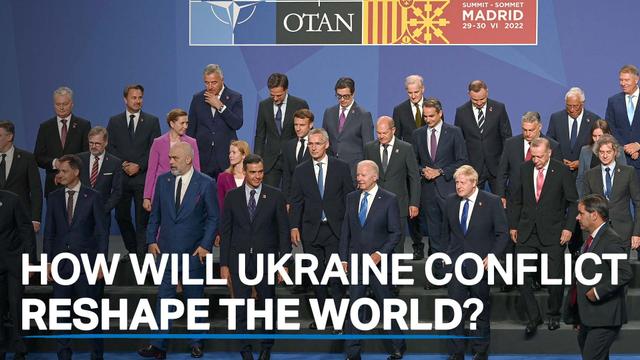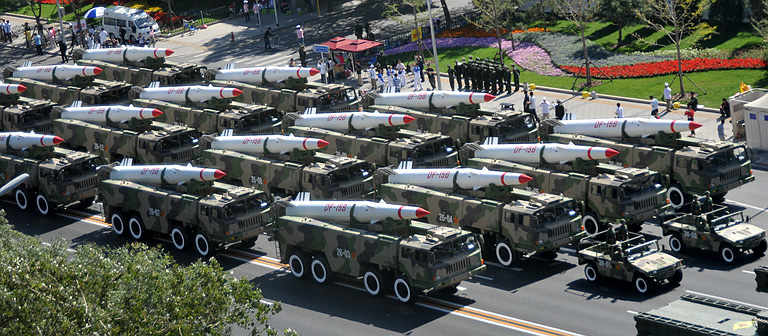
Proposing Alternatives to Support Ukrainian,
US, and European Security
Overseas Base Realignment and Closure Coalition
Dear President Joseph Biden, Secretary of Defense Lloyd J. Austin III, Joint Chiefs of Staff Chair Gen. Mark A. Milley, Secretary of State Antony Blinken, National Security Advisor Jake Sullivan, Members of Congress:
(May 24, 2022) — The undersigned represent a broad group of military analysts, veterans, scholars, advocates, and organizations from across the political spectrum who oppose the creation of new US military bases in Europe as wasteful and damaging to national security and who offer alternative ways to respond to the war in Ukraine.
We find the following and expand on each point below:
1) No Russian military threat justifies the creation of new US military bases.
2) New US bases would waste billions in taxpayer funds and distract from efforts to protect the security of the United States.
3) New US bases would further escalate military tensions with Russia, increasing the risk of a potentially nuclear war.
4) The US can and should close unnecessary bases in Europe as a sign of strength while deepening smarter, cost-effective alternatives with allies.
5) Proposals for US military posture in Europe can advance negotiations to end the war in Ukraine as quickly as possible.

1. No Russian Military Threat Justifies New US Bases
- Putin’s war in Ukraine has demonstrated the weakness of the Russian military, providing abundant evidence that it is not a conventional threat to the United States and NATO allies.
- While fears about Russia among some in Europe are understandable, the Russian military is not a threat to Europe beyond Ukraine, Moldova, and the Caucuses.
- Around 300 existing US base sites in Europe[1] and additional NATO bases and forces plus NATO Article 5 (requiring members to defend any member attacked) provide more than adequate deterrence to any Russian attack on NATO. New bases are simply unnecessary NATO allies, alone, have military bases and forces that are more than capable to defend Europe from any Russian military attack. If Ukraine’s military can hold off around 75% of Russia’s combat forces,[2] NATO allies do not need additional US bases and forces.
- Unnecessarily increasing the number of US military bases and troops in Europe would distract the US military from protecting the United States.
- New Bases Would Waste Billions of Taxpayer Dollars
Building up US bases and forces in Europe would waste billions of dollars better spent on crumbling US infrastructure and other pressing domestic needs. US taxpayers already spend far too much maintaining bases and forces in Europe: around $30 billion per year.[3]
- Even if allies pay for some new bases, US taxpayers will spend considerably more money to maintain larger numbers of US forces in Europe due to transportation costs, increased salaries, and other expenses. Future costs could escalate as host countries often withdraw financial support for US bases over time.
- Building new European bases likely would inflate the bloated Pentagon budget when we should be cutting that budget following the end of the Afghan war. The US spends more than 12 times what Russia spends on its military. US allies in NATO already vastly outspend Russia, and Germany and others plan to increase their military spending significantly.[4]

- New Bases Would Escalate US-Russia Tensions, Risking (Nuclear) War
- Building new US (or NATO) bases in Europe would further escalate growing military tensions with Russia, increasing the risk of a potentially nuclear war with Russia.
- Creating new US military bases in Eastern Europe, closer and closer to Russia’s borders, as part of NATO’s expansion over the past two decades, has threatened Russia unnecessarily and encouraged Putin to respond militarily. How would US leaders and the public have responded if Russia had built bases recently in Cuba, Venezuela, and Central America?

- Closing Bases as a Sign of Strength and Alternative Security Arrangements
• The US military already has far too many military bases—around 300 sites—and too many forces in Europe. Since the Cold War’s end, US bases in Europe have not protected Europe. They have served as launchpads for catastrophic wars in the Middle East.
- The US can and should safely close bases and withdraw forces in Europe as a sign of strength and confidence in the power of the US military and NATO allies and as a reflection of the actual threat facing Europe.
- The war in Ukraine has shown what military experts already knew: rapid response forces can deploy to Europe fast enough to be based in the continental United States thanks to air and sealift technology. Many of the troops responding to the war in Ukraine came from the United States rather than from bases in Europe, raising questions about the need for bases and troops in Europe.
- The war in Ukraine has shown that access agreements at host nation bases, weapons transport and broader logistics systems, training arrangements, and prepositioning are better and more cost effective ways to help NATO allies protect European security.

- Proposals to Advance Negotiations to End the War in Ukraine
• The US government can play a productive role in negotiations by promising not to build new bases in Europe.
- The US government can promise—publicly or secretly, as in the Cuban Missile Crisis—to reduce its forces, withdraw offensive weapons systems, and close unnecessary bases in Europe.
- The US and NATO can promise not to admit Ukraine or any new NATO members unless Russia becomes a member as well.
- The US and NATO can urge a return to treaties in Europe governing the deployment of conventional and nuclear forces, including regular inspections and monitoring at bases.
In the interest of US, European, and global security, we urge you not to create additional US military bases in Europe and to support diplomatic negotiations to end the war in Ukraine as quickly as possible.
Sincerely,
Individuals
(affiliations for identification purposes only)
Theresa (Isa) Arriola, Assistant Professor, Concordia University
William J. Astore, Lt Col, USAF (Ret.)
Clare Bayard, Board Member, About Face Veterans Against The War
Amy F. Belasco, Retired, Defense Budget Expert
Medea Benjamin, Co-director, Codepink for Peace
Michael Brenes, Lecturer in History, Yale University
Noam Chomsky, Institute Professor (emeritus), MIT; Laureate Professor, University of Arizona
Cynthia Enloe, Research Professor, Clark University
Monaeka Flores, Prutehi Litekyan
Joseph Gerson, President, Campaign for Peace, Disarmament and Common Security
Eugene Gholz, Associate Professor, University of Notre Dame
Lauren Hirshberg, Associate Professor, Regis College
Catherine Lutz, Professor, Brown University
Peter Kuznick, Professor of History and Director, Nuclear Studies Institute, American University
Miriam Pemberton, Associate Fellow, Institute for Policy Studies
David Swanson, Author, World BEYOND War
David Vine, Professor, American University
Allan Vogel, Board of Directors, Foreign Policy Alliance, Inc.
Lawrence Wilkerson, Colonel, US Army (Ret.); Senior Fellow Eisenhower Media Network;
Fellow, Quincy Institute for Responsible Statecraft
Ann Wright, Colonel, US Army (Ret.); Advisory Board Member, Veterans for Peace
Kathy Yuknavage, Treasurer, Our Common Wealth 670
Organizations
About Face Veterans Against The War
Campaign for Peace, Disarmament and Common Security
CODEPINK
Environmentalists Against War
Hawai’i Peace and Justice
National Priorities Project at the Institute for Policy Studies
Progressive Democrats of America
Public Citizen
RootsAction.org
Veterans For Peace Chapter 113 – Hawai’i
War Prevention Initiative
World BEYOND War
Footnotes
[1] The Pentagon’s most recent “Base Structure Report” for FY2020 identifies 274 base sites. The Pentagon’s report is notoriously inaccurate. An additional 22 sites are identified in David Vine, Patterson Deppen, and Leah Bolger, “Drawdown: Improving US and Global Security Through Military Base Closures Abroad.” Quincy Brief no. 16, Quincy Institute for Responsible Statecraft and World BEYOND War, September 20, 2021.
[2] https://www.defense.gov/News/Transcripts/Transcript/Article/2969068/senior-defense-official-holds-a-background-briefing-march-16-2022/.
[3] The “Drawdown” report (p. 5) estimates global costs for bases, alone, of $55 billion/year. With 39% of the estimated 750 US bases abroad located in Europe, costs for the continent are around $21.34 billion/year. Costs for the 100,000 US troops now in Europe total around $11.5 billion, using a conservative estimate of $115,000/troop.
[4] Diego Lopes da Silva, et al., “Trends in World Military Expenditure, 2021,” SIPRI Fact Sheet, SIPRI, April 2022, p. 2.